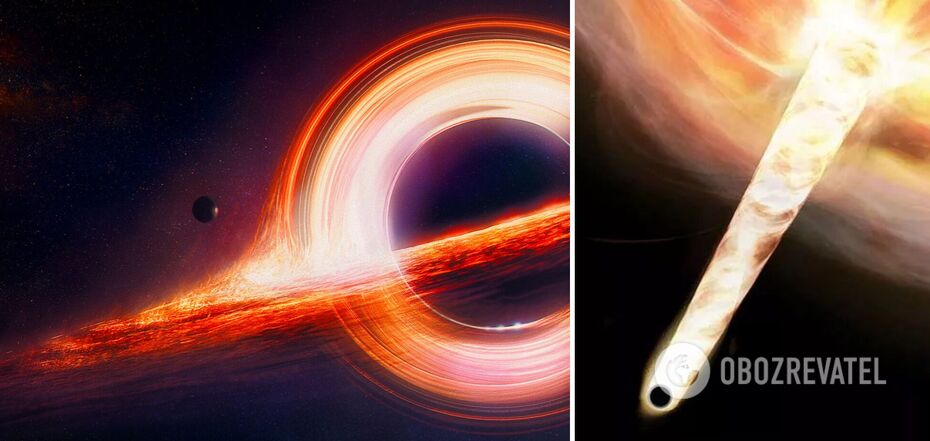Life
Black hole 20 million times heavier than the Sun travelling through space with a tail of stars - scientists
Astronomers have spotted a supermassive runaway black hole that has apparently escaped from its own galaxy and is hurtling through space with a tail of stars. It is potentially the first observed evidence that supermassive black holes can be ejected from their host galaxies.
The astronomers' study is published on arXiv.org. The scientists managed to catch the runaway black hole thanks to observations by the Hubble Space Telescope of the dwarf galaxy RCP 28, located at a distance of about 7.5 billion light-years from Earth.
During the observations of RCP 28, the researchers noticed a bright band of light, which turned out to be a black hole. Further observations showed that the streak is more than 200,000 light-years long, which is about twice the width of the Milky Way.
Scientists assume that the band consists of compressed gas from which stars are actively forming. The gas follows a black hole that is estimated to be 20 million times the mass of the Sun and is moving away from its home galaxy at a speed of 5.6 million km/h, which is about 4,500 times the speed of sound.
The assumption that the black hole was ejected from its own galaxy was made by scientists given that the bright streak comes directly from the centre of the galaxy, where a supermassive black hole is usually located.
"We found a thin line in the Hubble image pointing to the centre of the galaxy. Using the Keck telescope in Hawaii, we found that the line and the galaxy are connected. From a detailed analysis of this feature, we concluded that we are seeing a supermassive black hole that was ejected from the galaxy, leaving behind a trail of gas and newly formed stars," Peter van Dokkum, lead author of the study and professor of physics and astronomy at Yale University, told LiveScince.
However, the scientists did not immediately realise that they were seeing a runaway black hole. The fact is that active supermassive black holes often eject jets at high speeds that can be observed as streaks of light. These are called astrophysical jets.
But unlike what scientists have seen, these jets weaken as they move away from the centre of the galaxy, where the black hole is usually located. They also scatter and lose their linearity. So the first guess about what they saw was wrong.
It was only later, when van Dokkum and his team investigated the streak, that they realised exactly what they were seeing. The team concluded that the explanation that best fits the streak is a supermassive black hole ripping through the gas surrounding its galaxy, compressing that gas enough to cause star formation in its wake.
"If this is confirmed, it will be the first time we have clear evidence that supermassive black holes can erupt from galaxies," says van Dokkum.
Next, the scientists intend to understand how the black hole was ejected from the host galaxy. Dokkum claims to already have a theory.
"The most likely scenario that explains everything we have seen is a slingshot caused by the interaction of three bodies. When three bodies of the same mass interact gravitationally, the interaction does not lead to a stable configuration, but usually to the formation of a binary and the ejection of a third body," the professor explained.
This means that the runaway black hole was once part of a rare supermassive double black hole, and during the galactic merger, a third supermassive black hole joined this partnership and ejected one of its inhabitants.
The very theory of the existence of such a process was suggested 50 years ago, but there was no evidence for it before, although theorists believe that there should be many such runaway black holes.
Earlier, OBOZREVATEL told how scientists managed to see for the first time how a black hole turned a star into "spaghetti" of matter.




























